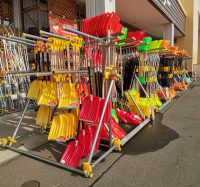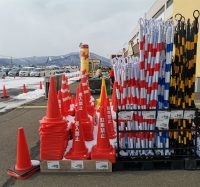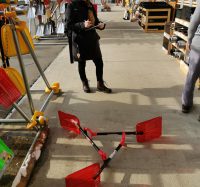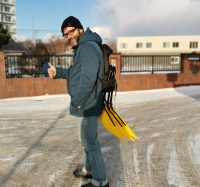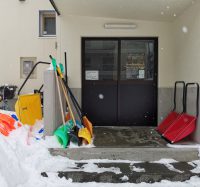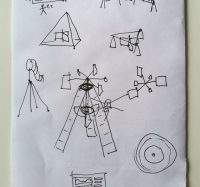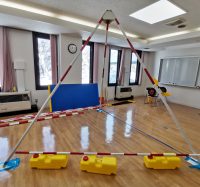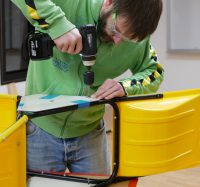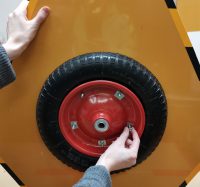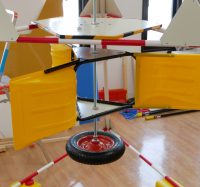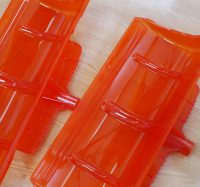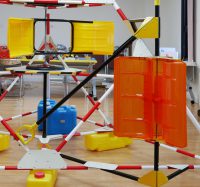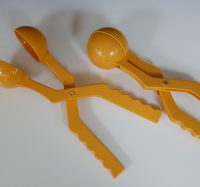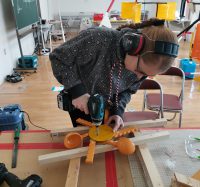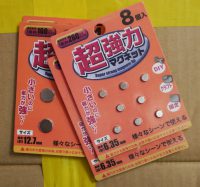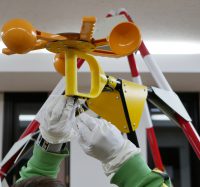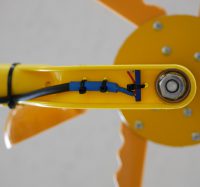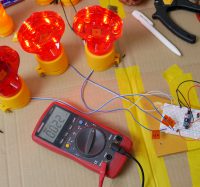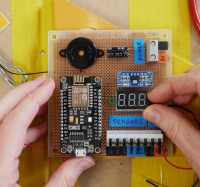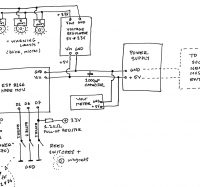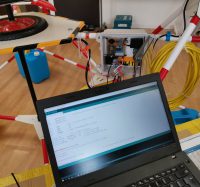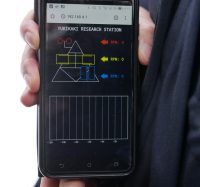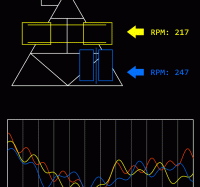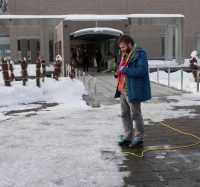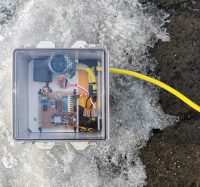Yukikaki Research Station
Interactive installation with Niklas Roy
Sapporo International Art Festival / 2020
Yukikaki Research Station was built together with Niklas Roy during a research residency of the Sapporo International Art Festival (SIAF2020). Originally, our plan was to work on an outdoor installation concept, where snow and ice would play a central role. Sapporo is well-known for amazing winters and the annual Snow Festival. The theme of the festival, “Of Roots and Clouds”, also served as our inspiration. However, when we arrived in Sapporo at the end of January, there was hardly any snow. In our home countries, Germany and Finland, and in many other places in the northern hemisphere the situation was similar, raising concerns over the warming winters. Thus, we began to adapt our plans to the ongoing situation.
We made visits to the local hardware stores to explore materials and discovered an impressive array of colourful snow equipment. The Japanese expression “yukikaki” means both, the act of snow shoveling, as well as the snow shovels used for it. Due to the high snowfall in Sapporo during the winter season, people living in the city are used to engaging in various forms of yukikaki. Later on, when it started to snow, we witnessed how all the yukikaki items were used in daily life as a necessity to cope with large amounts of snow. But what would happen to all this equipment in the not so far future, where we might encounter less snow?
The outcome of our residency, Yukikaki Research Station, repurposes yukikaki and other snow gear as experimental wind turbines. It explores how yukikakis of different shapes behave as turbines by measuring their rotation speed via magnetic sensors. A microcontroller stores the values over time, allowing the audience to view the data through a mobile interface. In the video you can see Yukikaki Research Station inside the Tenjinyama Art Studio, where we built it, although it was naturally planned to be exhibited eventually outside.
Like so many other cultural events, SIAF2020 was unfortunately cancelled due to the impact of the coronavirus pandemic. However, information about the artworks can be found on the festival website and in the online archive, SIAF2020 Matrix. Due to the circumstances, we don’t have documentation of the Yukikaki Research Station outdoors at its planned location in the Sapporo Art Park, but the physical installation was part of SIAF2020 Document exhibition at the Sapporo Cultural Community Center in February 2021. We were also very happy to have in February 2025 the chance to show Yukikaki Research Station outdoors as a part of the SIAF Pre-Events program at the Sapporo Snow Festival.
Please see also more documentation on Niklas’ website and Yukikaki Research Station photos from Sapporo Snow Festival 2025.
We greatly thank the curatorial and organisational team of SIAF2020 for their dedication, helpfulness and hospitality. Special thanks to Agnieszka Kubicka-Dzieduszycka, Kumiko Noguchi, Asami Hosokawa, Chika Matsumoto, Takayuki Ota and Kohei Sato for taking care of us and finding all that we needed. We also really enjoyed staying and working at the Tenjinyama Art Studio, where the friendly staff and co-residents made us feel at home. Many thanks also to the City of Sapporo for the amazing possibility to get to know Sapporo and to work on the installation.
Yukikaki Research Station was built together with Niklas Roy during a research residency of the Sapporo International Art Festival (SIAF2020). Originally, our plan was to work on an outdoor installation concept, where snow and ice would play a central role. Sapporo is well-known for amazing winters and the annual Snow Festival. The theme of the festival, “Of Roots and Clouds”, also served as our inspiration. However, when we arrived in Sapporo at the end of January, there was hardly any snow. In our home countries, Germany and Finland, and in many other places in the northern hemisphere the situation was similar, raising concerns over the warming winters. Thus, we began to adapt our plans to the ongoing situation.
We made visits to the local hardware stores to explore materials and discovered an impressive array of colourful snow equipment. The Japanese expression “yukikaki” means both, the act of snow shoveling, as well as the snow shovels used for it. Due to the high snowfall in Sapporo during the winter season, people living in the city are used to engaging in various forms of yukikaki. Later on, when it started to snow, we witnessed how all the yukikaki items were used in daily life as a necessity to cope with large amounts of snow. But what would happen to all this equipment in the not so far future, where we might encounter less snow?
The outcome of our residency, Yukikaki Research Station, repurposes yukikaki and other snow gear as experimental wind turbines. It explores how yukikakis of different shapes behave as turbines by measuring their rotation speed via magnetic sensors. A microcontroller stores the values over time, allowing the audience to view the data through a mobile interface. In the video you can see Yukikaki Research Station inside the Tenjinyama Art Studio, where we built it, although it was naturally planned to be exhibited eventually outside.
Like so many other cultural events, SIAF2020 was unfortunately cancelled due to the impact of the coronavirus pandemic. However, information about the artworks can be found on the festival website and in the online archive, SIAF2020 Matrix. Due to the circumstances, we don’t have documentation of the Yukikaki Research Station outdoors at its planned location in the Sapporo Art Park, but the physical installation was part of SIAF2020 Document exhibition at the Sapporo Cultural Community Center in February 2021. We were also very happy to have in February 2025 the chance to show Yukikaki Research Station outdoors as a part of the SIAF Pre-Events program at the Sapporo Snow Festival.
Please see also more documentation on Niklas’ website and Yukikaki Research Station photos from Sapporo Snow Festival 2025.
We greatly thank the curatorial and organisational team of SIAF2020 for their dedication, helpfulness and hospitality. Special thanks to Agnieszka Kubicka-Dzieduszycka, Kumiko Noguchi, Asami Hosokawa, Chika Matsumoto, Takayuki Ota and Kohei Sato for taking care of us and finding all that we needed. We also really enjoyed staying and working at the Tenjinyama Art Studio, where the friendly staff and co-residents made us feel at home. Many thanks also to the City of Sapporo for the amazing possibility to get to know Sapporo and to work on the installation.
